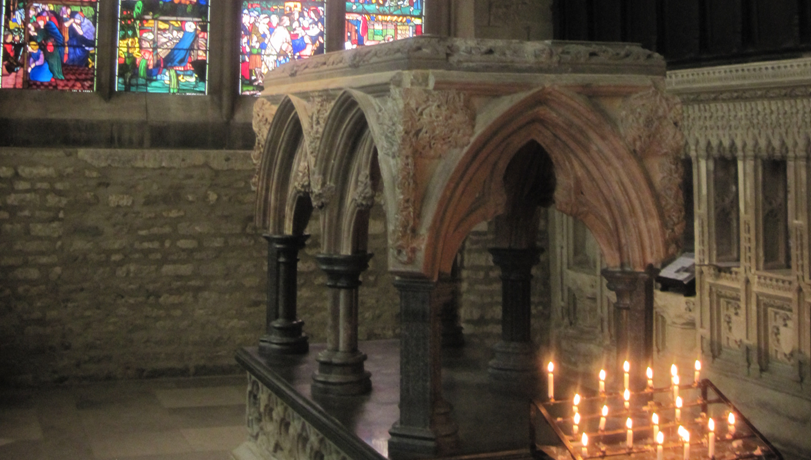This print refers to one of David's miracles. When he was preaching to a crowd who could not hear him, the earth underneath his rose up into a hill and a dove landed on his shoulder...a sign of the Holy Spirit
Saint David is one of the greatest and best remembered bishops in Wales. Living in the sixth century he preached all over Wales and southern England (which at that time was heavily Welsh also) establishing many churches and monasteries. It is claimed that he founded the monastery of Glastonbury by his 11th century biographer, Rhygyfarch. But he certainly founded a monastery at St. Davids in Pembrokeshire, Wales, choosing a patch of earth that was sunken among the coastal hills in order to hide any church buildings from raiders. Even as an abbot and a bishop, David lived an austere lifestyle in prayer, diet and general modesty, without the seclusion that other ascetetics. Instead of hermitage, a common Christian Celtic practice, David emphasized the importance of the community. He made a pilgrimage to both Rome and Jerusalem and was made an archbishop by patriarch (pope) of Jerusalem (this is the basis for the claims of later medieval bishops of St. Davids that they should have archiepiscopal status, when Canterbury's power was extended over Wales after the Norman invasion). David held great influence in the Celtic church in Wales and abroad, a renowned scholar for his travels and elevation as archbishop, David also called together many synods to keep tight order within the church. He was always among the people, disregarding rank or any social or civil status, which was probably one of the main reasons for his popularity and veneration as a saint immediately following his death. The exact year of his death is disputed, traditionally believed to be in 589, though we do know that he died on march first, leaving his people with words “Be joyful, and keep your faith and your creed. Do the little things that you have seen me do and heard about. I will wall the path that our fathers have trod before us.” Just this past March 1st , St. David’s Cathedral in Wales dedicated his restored shrine, moving his relics from the trinity chapel, where they were discovered about a century ago, to the redecorated medieval shrine in the chancel. Celebrations are continuing until March 5th with daily prayers at the shrine, Choral Eucharist’s and medieval monastic chants. The rebuilding of his shrine is a big step in restoring devotion to saints in the Anglican Church as a diocesan objective. His tomb will become once again the greatest center of pilgrimage in Wales. Hopefully, other churches and cathedrals will follow in the footsteps of the people of St. David’s in retaining an important and beautiful piece of the Anglican tradition.


No comments:
Post a Comment